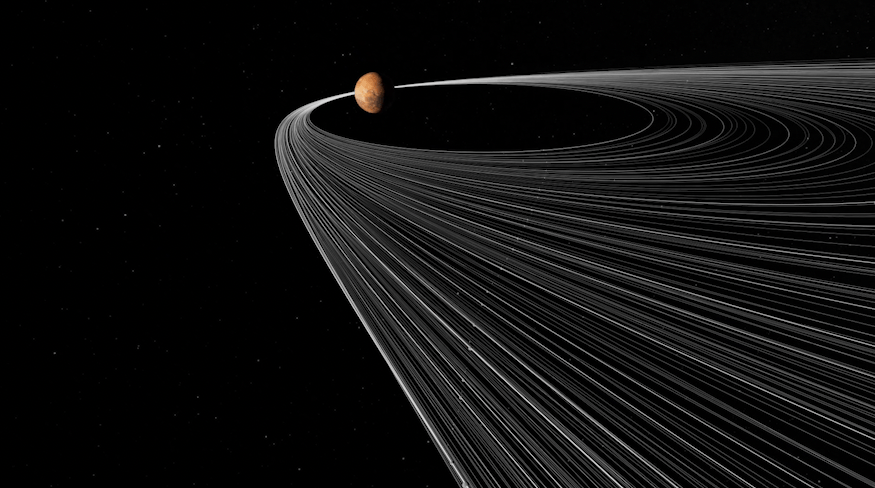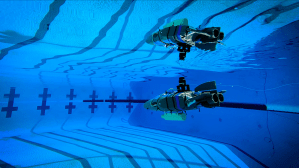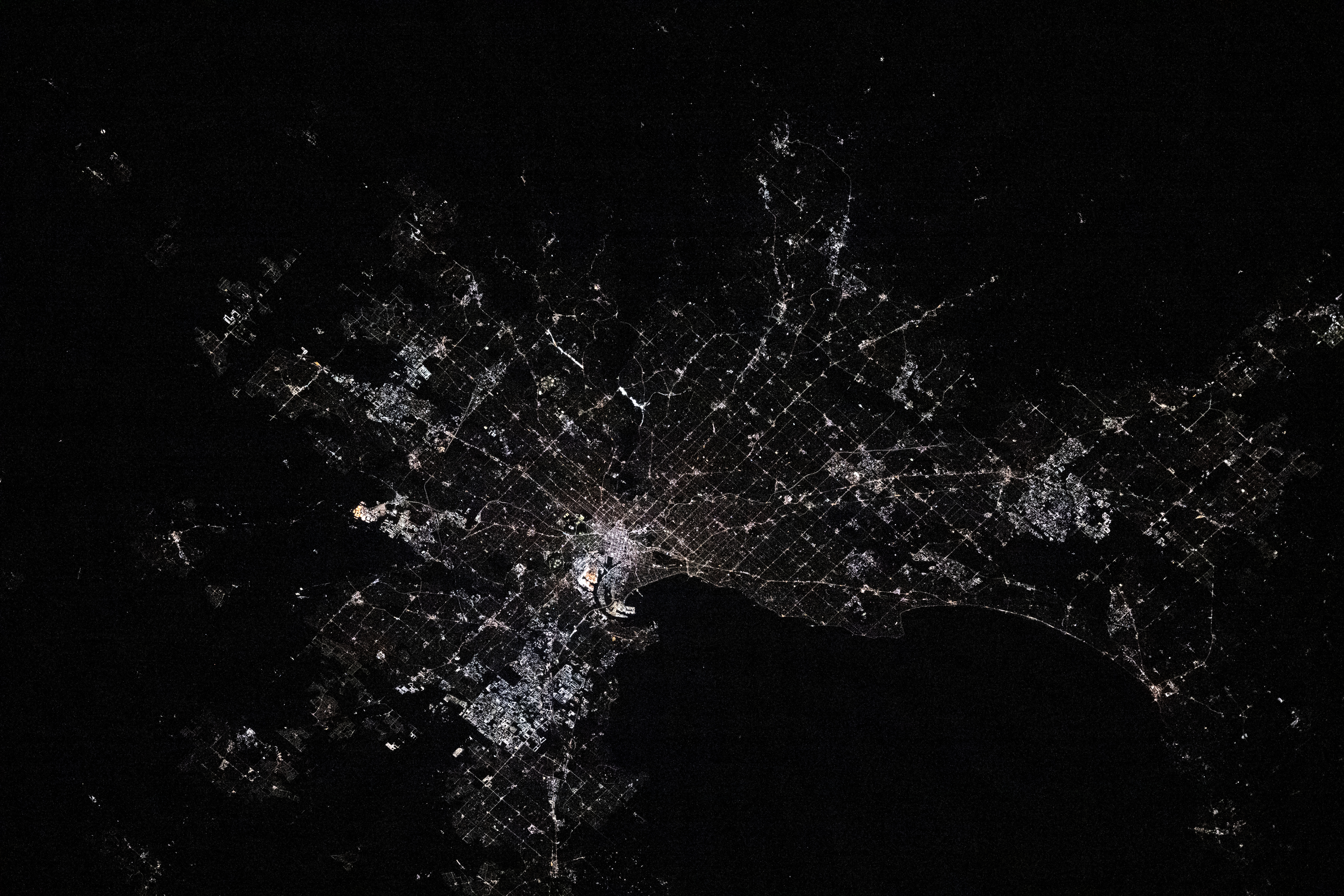Making Mars’ Moons: Supercomputers Offer ‘Disruptive’ New Explanation
A NASA study using a series of supercomputer simulations reveals a potential new solution to a longstanding Martian mystery: How did Mars get its moons? The first step, the findings say, may have involved the destruction of an asteroid. The research team, led by Jacob Kegerreis, a postdoctoral research scientist at NASA’s Ames Research Center in California’s […]
Making Mars’ Moons: Supercomputers Offer ‘Disruptive’ New Explanation

A NASA study using a series of supercomputer simulations reveals a potential new solution to a longstanding Martian mystery: How did Mars get its moons? The first step, the findings say, may have involved the destruction of an asteroid.
The research team, led by Jacob Kegerreis, a postdoctoral research scientist at NASA’s Ames Research Center in California’s Silicon Valley, found that an asteroid passing near Mars could have been disrupted – a nice way of saying “ripped apart” – by the Red Planet’s strong gravitational pull.
The team’s simulations show the resulting rocky fragments being strewn into a variety of orbits around Mars. More than half the fragments would have escaped the Mars system, but others would’ve stayed in orbit. Tugged by the gravity of both Mars and the Sun, in the simulations some of the remaining asteroid pieces are set on paths to collide with one another, every encounter further grinding them down and spreading more debris.
Many collisions later, smaller chunks and debris from the former asteroid could have settled into a disk encircling the planet. Over time, some of this material is likely to have clumped together, possibly forming Mars’ two small moons, Phobos and Deimos.
To assess whether this was a realistic chain of events, the research team explored hundreds of different close encounter simulations, varying the asteroid’s size, spin, speed, and distance at its closest approach to the planet. The team used their high-performance, open-source computing code, called SWIFT, and the advanced computing systems at Durham University in the United Kingdom to study in detail both the initial disruption and, using another code, the subsequent orbits of the debris.
In a paper published Nov. 20 in the journal Icarus, the researchers report that, in many of the scenarios, enough asteroid fragments survive and collide in orbit to serve as raw material to form the moons.
“It’s exciting to explore a new option for the making of Phobos and Deimos – the only moons in our solar system that orbit a rocky planet besides Earth’s,” said Kegerreis. “Furthermore, this new model makes different predictions about the moons’ properties that can be tested against the standard ideas for this key event in Mars’ history.”
Two hypotheses for the formation of the Martian moons have led the pack. One proposes that passing asteroids were captured whole by Mars’ gravity, which could explain the moons’ somewhat asteroid-like appearance. The other says that a giant impact on the planet blasted out enough material – a mix of Mars and impactor debris – to form a disk and, ultimately, the moons. Scientists believe a similar process formed Earth’s Moon.
The latter explanation better accounts for the paths the moons travel today – in near-circular orbits that closely align with Mars’ equator. However, a giant impact ejects material into a disk that, mostly, stays close to the planet. And Mars’ moons, especially Deimos, sit quite far away from the planet and probably formed out there, too.
“Our idea allows for a more efficient distribution of moon-making material to the outer regions of the disk,” said Jack Lissauer, a research scientist at Ames and co-author on the paper. “That means a much smaller ‘parent’ asteroid could still deliver enough material to send the moons’ building blocks to the right place.”
It’s exciting to explore a new option for the making of Phobos and Deimos – the only moons in our solar system that orbit a rocky planet besides Earth’s.

Jacob Kegerreis
Postdoctoral research scientist at NASA’s Ames Research Center
Testing different ideas for the formation of Mars’ moons is the primary goal of the upcoming Martian Moons eXploration (MMX) sample return mission led by JAXA (Japan Aerospace Exploration Agency). The spacecraft will survey both moons to determine their origin and collect samples of Phobos to bring to Earth for study. A NASA instrument on board, called MEGANE – short for Mars-moon Exploration with GAmma rays and Neutrons – will identify the chemical elements Phobos is made of and help select sites for the sample collection. Some of the samples will be collected by a pneumatic sampler also provided by NASA as a technology demonstration contribution to the mission. Understanding what the moons are made of is one clue that could help distinguish between the moons having an asteroid origin or a planet-plus-impactor source.
Before scientists can get their hands on a piece of Phobos to analyze, Kegerreis and his team will pick up where they left off demonstrating the formation of a disk that has enough material to make Phobos and Deimos.
“Next, we hope to build on this proof-of-concept project to simulate and study in greater detail the full timeline of formation,” said Vincent Eke, associate professor at the Institute for Computational Cosmology at Durham University and a co-author on the paper. “This will allow us to examine the structure of the disk itself and make more detailed predictions for what the MMX mission could find.”
For Kegerreis, this work is exciting because it also expands our understanding of how moons might be born – even if it turns out that Mars’ own formed by a different route. The simulations offer a fascinating exploration, he says, of the possible outcomes of encounters between objects like asteroids and planets. These events were common in the early solar system, and simulations could help researchers reconstruct the story of how our cosmic backyard evolved.
This research is a collaborative effort between Ames and Durham University, supported by the Institute for Computational Cosmology’s Planetary Giant Impact Research group. The simulations used were run using the open-source SWIFT code, carried out on the DiRAC (Distributed Research Utilizing Advanced Computing) Memory Intensive service (“COSMA”), hosted by Durham University on behalf of the DiRAC High-Performance Computing facility.
For news media:
Members of the news media interested in covering this topic should reach out to the NASA Ames newsroom.
Share
Details
Related Terms
What's Your Reaction?
















































